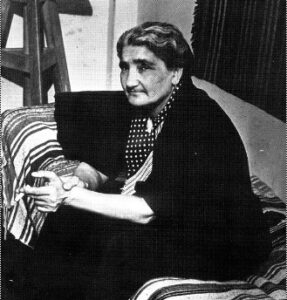Unveiling the Story Behind the Iconic Django Reinhardt Photo and His Guitar

Within the vast realm of Django Reinhardt’s legacy, there are two photographs that have attained global fame. However, they have left us with enduring questions: Where were these pictures taken? And what guitar was Django playing in them? In this blog post, we will delve into the fascinating backstory behind these images, shedding light on their origins and the guitar that graced Django’s hands.
The Encounter at The Aquarium:
In 1946, shortly after Django’s arrival in New York, Down Beat magazine dispatched reporter and photographer William Gottlieb to meet the jazz virtuoso at The Aquarium, a renowned jazz club in the city. Despite the language barrier, Gottlieb endeavored to capture Django’s essence. Recognizing the captivating nature of Django’s hands, he chose to focus his lens on their intricate movements. For the purpose of the photo shoot, Django utilized Fred Guy’s guitar as a prop, providing a fascinating visual element to the images. These photographs would later grace the cover of the magazine, solidifying their status as iconic representations of Django Reinhardt.
Unveiling the Answers:
Let us now uncover the mystery surrounding the location and the guitar featured in these timeless photographs. The pictures were taken in New York in 1946, capturing a pivotal moment in Django’s career. As for the guitar, it was a Levin Archtop, a Swedish-made instrument borrowed specifically for the photo shoot from Fred Guy, the esteemed rhythm guitarist for the Duke Ellington Orchestra. Interestingly, Fred Guy had acquired this guitar during a European tour with Duke Ellington back in 1939.


Django’s Journey in the United States:
Upon his arrival in the United States in 1946, Django embarked on a journey that intertwined his musical prowess with the challenges of unfamiliar territory. His association with the Duke Ellington tour offered promising prospects, with a lineup of 21 performances scheduled, including two prestigious nights at Carnegie Hall. However, Django’s expectations were met with disappointment. Having arrived late for the second night’s performance, he found himself without a guitar, ultimately leading to a subpar and disheartening experience. Although he lingered in New York for another month, performing at Café Society, Django’s longing for home and a sense of unfulfilled conquest compelled him to return to France as his 60-day visa approached its expiration.
A Transformative Return: “A new man (A-nouman)”
Django’s homecoming marked a turning point in his artistic journey. Enriched by the music he encountered in the West, his style underwent a profound transformation, veering towards modern jazz from its swing roots. However, in the ensuing years, his relationship with music and his popularity experienced fluctuations. In 1950, he temporarily set aside his guitar, immersing himself in family life and embracing a more traditional Romani existence.
The famous Django Reinhardt photographs captured a moment that embodied both his undeniable talent and the challenges he faced during his time in the United States. These images, taken at The Aquarium in New York, showcase Django’s unmatched dexterity while highlighting the borrowed Levin Archtop guitar. The story behind these photographs illuminates the profound impact of Django’s encounters and experiences on his musical evolution. As we explore Django’s captivating journey, we gain insight into the man behind the legend and the ever-evolving nature of his musical legacy.






